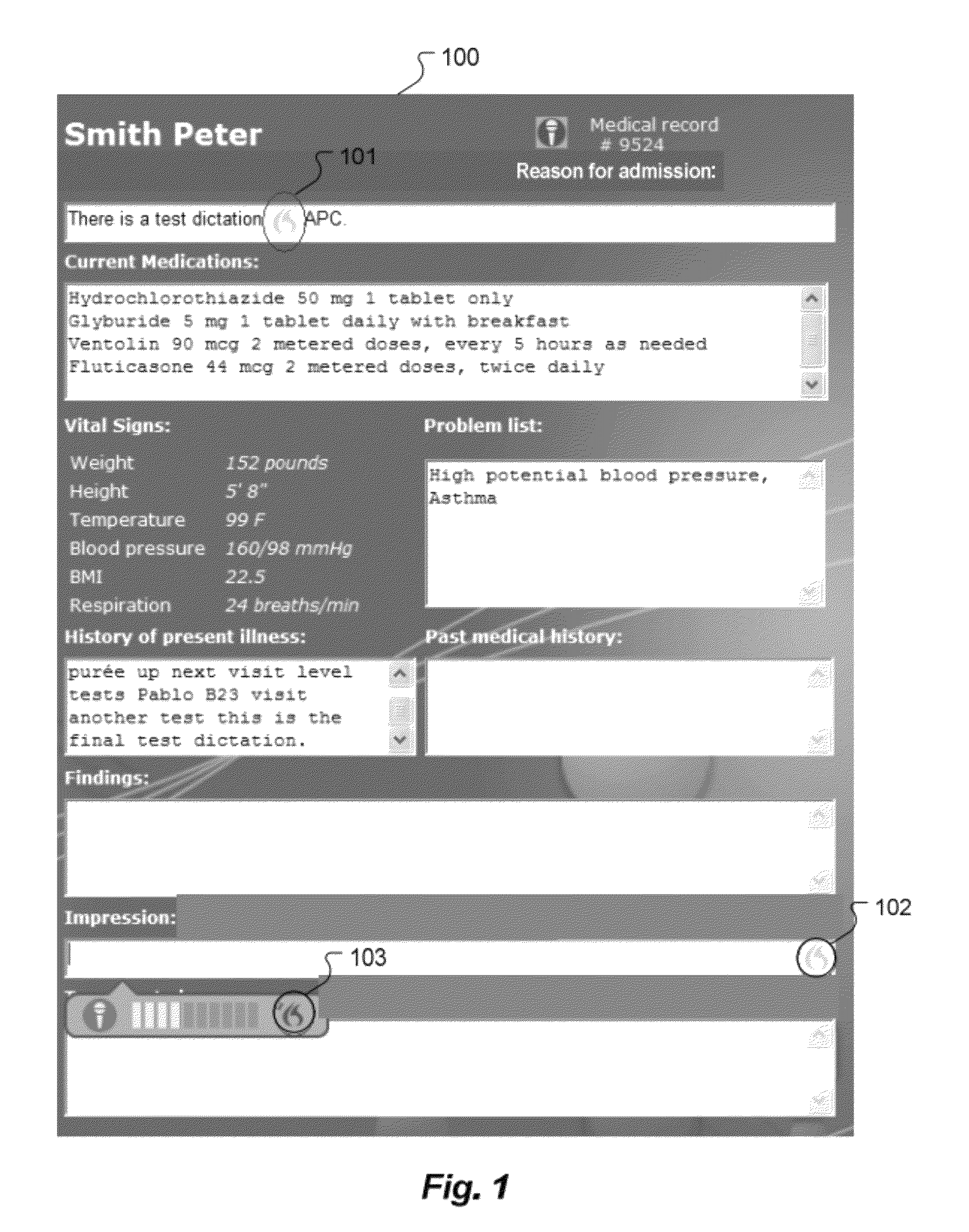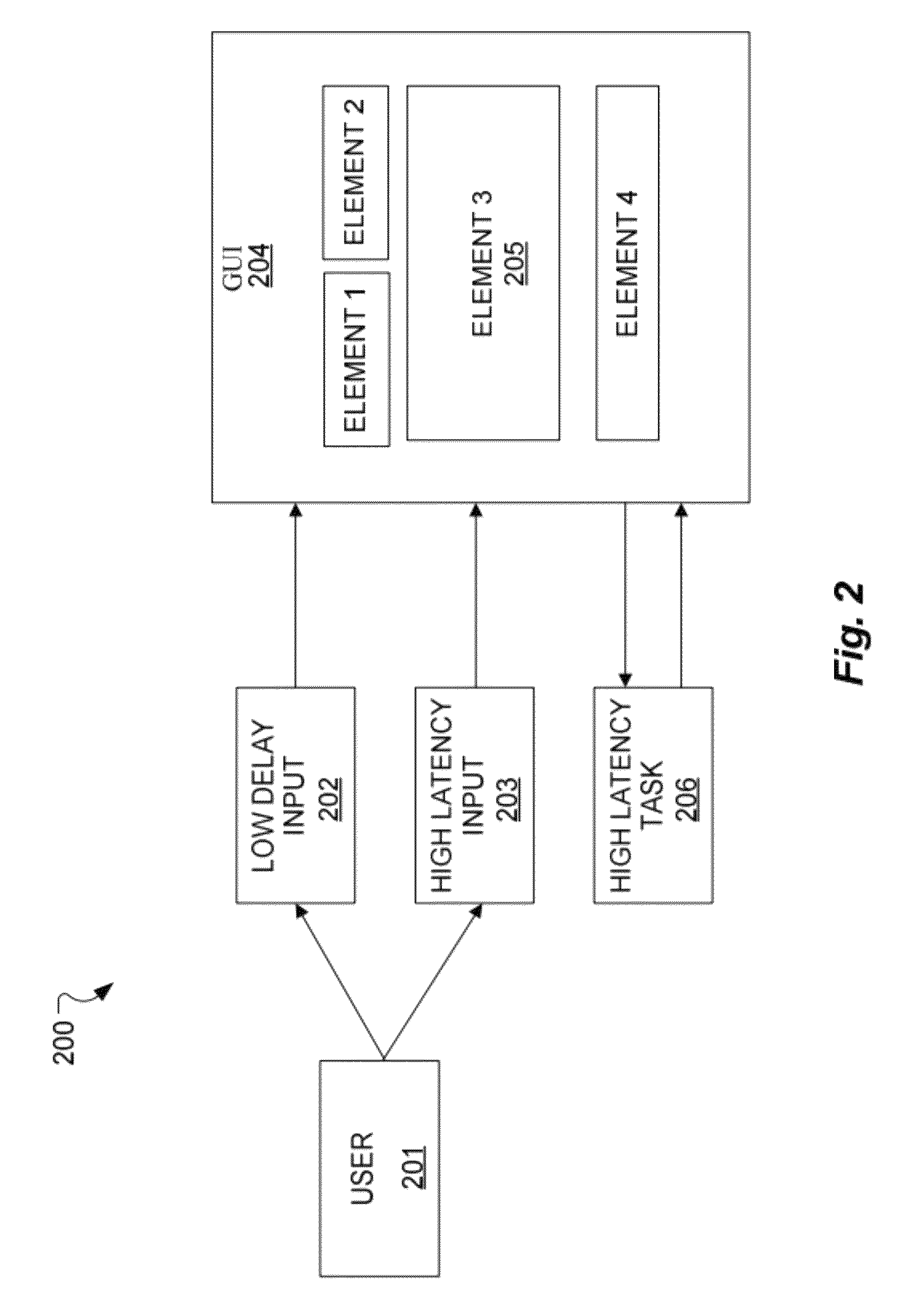Latency hiding techniques for multi-modal user interfaces
a multi-modal user interface and latency hiding technology, applied in speech analysis, speech recognition, instruments, etc., can solve the problems of high latency inputs with significant response latency, user's lack of clear picture of the current state of the system, and inability to completely eliminate them, so as to hide response latency delays and high latency
- Summary
- Abstract
- Description
- Claims
- Application Information
AI Technical Summary
Benefits of technology
Problems solved by technology
Method used
Image
Examples
Embodiment Construction
[0016]In one aspect, embodiments of the present invention minimize the effects of response latencies in multi-modal user input systems with increased responsiveness to the user as well as valuable user feedback.
[0017]FIG. 1 shows an example of a mixed latency multi-modal graphical user interface (GUI) 100 according to one specific embodiment of the present invention. The GUI 100 shows a medical record form having multiple input fields which can be accessed and filled using different user input modalities including low delay inputs such as a keyboard, mouse, pointing device etc. which respond to user inputs without significant delay, and also a high latency speech recognition input which has a significant response latency after receiving a user input before providing a corresponding completed response.
[0018]In the GUI 100 shown in FIG. 1, the system input focus was first positioned at an initial position by one of the user input controls (keyboard, mouse, speech recognition, etc.)—in...
PUM
 Login to View More
Login to View More Abstract
Description
Claims
Application Information
 Login to View More
Login to View More - R&D
- Intellectual Property
- Life Sciences
- Materials
- Tech Scout
- Unparalleled Data Quality
- Higher Quality Content
- 60% Fewer Hallucinations
Browse by: Latest US Patents, China's latest patents, Technical Efficacy Thesaurus, Application Domain, Technology Topic, Popular Technical Reports.
© 2025 PatSnap. All rights reserved.Legal|Privacy policy|Modern Slavery Act Transparency Statement|Sitemap|About US| Contact US: help@patsnap.com



